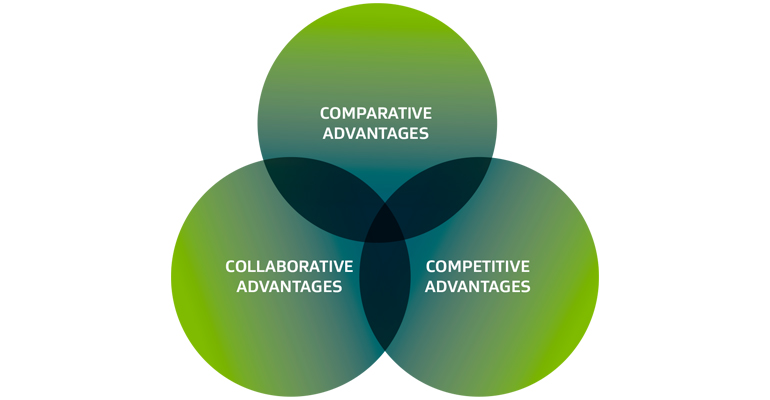Data, research and analysis
Destination Management requires data, research and insights to inform decision making and measure success. This includes understanding your visitors well, how your destination delivers on visitor needs and expectations, as well as measuring how your community feels about visitors and the tourism sector.
On this page
The tourism industry is affected by the global environment, which is in a constant state of change. It is important to understand the micro- and macro-economic environments and stay abreast of developments that could affect your destination.
![]()
There is no single solution or recipe for success – destinations need to take account for their unique conditions, opportunities and challenges and plan accordingly.
Understand your visitors
Gather data and insights about who your visitors are, why they visit your destination and the value they add to your economy and community. Consider current and future trends, and set a baseline for measuring progress and performance. Use both quantitative and qualitative research.
Use sources such as:
- Ministry of Business, Innovation and Employment (MBIE), Tourism New Zealand (TNZ)(external link), New Zealand Transport Agency (NZTA)(external link), Department of Conservation (DOC)(external link), New Zealand Trade and Enterprise (NZTE)(external link) and Statistics New Zealand(external link) for regional summaries and international visitor statistics
- Tourism Industry Aotearoa (TIA)(external link) for domestic visitors (DGiT)
- NZTE New Zealand Visitor Activity Forecast(external link)
- TIA & TNZ for the ‘Mood of the Nation’ survey(external link) and other quantitative research on community attitudes to tourism
- Regional Tourism Organisations (RTOs), Economic Development Agencies (EDAs) and i-SITEs
Bespoke research could be required if there are information gaps. Working with partners is a cost-effective way of procuring research where there are common needs.

Vaughan Brookfield, Lake Pukaki, Canterbury
Ask
- Do we have a good understanding of our visitors and their contribution to our economy?
- Do we know who is coming, why they are visiting, where they are coming from, what they do and how satisfied they are?
- Do we know how our visitors perceive us?
- Are our data and insights reliable and robust, or only indicative?
- What are the future visitor trends and forecasts?
- Where are our information gaps? How do we address these?
- Are there specific sites that need deeper analysis to understand demand, use, carrying capacities, impacts and benefits?
- Is there a clear understanding of the supply- and-demand potential for Māori-related visitor experiences?
- How are we monitoring community satisfaction/sentiment about visitors and the tourism sector?
Understand the potential of your destination
Successful destinations differentiate themselves and offer compelling reasons to visit, fulfilling visitor needs and expectations (while also being vibrant places to live and work). A destination’s product offering should support the brand and be aligned to target markets and community aspirations.
Some places are destinations in their own right, others are part of the visitor journey between places, and some are part of a hub-and-spoke configuration connected to an urban centre. Identifying the type of destination that you are, and what you want to become will help you to focus on pragmatic strategies and realistic outcomes.
Useful analysis tools:
- SWOT – identifies the strengths, weaknesses, opportunities and threats
- PESTEL – identifies the political, economic, social, technological, environmental and legal factors
- COMPETITOR ANALYSIS – identifies competitor destinations’ brands, product offerings and visitor markets/profiles, share of visitors, visitor nights and visitor expenditure.
Identify your destination’s comparative and competitive advantages. Comparative advantages are the resources within the destination, such as the people, environment, knowledge, economy, infrastructure and historic and cultural/indigenous aspects. A competitive advantage is the ability to use a destination’s resources efficiently and effectively over the long term (Crouch and Ritchie 1999). The goal is to turn your comparative advantages into competitive advantages.
In addition, identify whether your destination can work collaboratively with others, leveraging your comparative and competitive advantages to further maximise opportunities. This could include collaborations within and across products, sectors and regions/destinations.
![]()
Use this section to inform the Target Market, Experience & Product Development (Attractions) components of the plan.

Diagram description
Assess your destination’s product offering
Carry out a ‘product audit’ to find out what your destination has to offer (built, natural, heritage and cultural assets) including accommodation, attractions/activities and services such as cafes and restaurants. Also consider what events, meetings and conferences also attract visitors to the destination. Identify hero experiences that create demand for your destination, as well as supporting themes and experiences.
Assess whether these experiences are meeting visitor needs and expectations in your target markets, as well as whether they are increasing visitor spend, regional dispersal and off-peak visits.
Try to identify the scale and capacity of the experiences offered and any existing limitations and pressure points, particularly with regard to supporting infrastructure. GIS mapping can help with identifying and analysing types of geographic features and spatial data to inform planning and development.
Ask
- What are the key assets of the destination?
- What are our hero destinations and experiences?
- What are the supporting themes and experiences?
- How compelling and competitive is our destination’s offering?
- Does our destination have a unique selling proposition/point of difference from other destinations?
- Are the offered experiences meeting the needs and expectations of the target markets? Are there differences between domestic and international visitors in terms of needs and expectations?
- Could we encourage off-peak visits and a better spread across the region? Which markets could we influence?
- Are there opportunities for new or enhanced experiences that could help us to meet our goals?
- Are there any gaps or limitations in the product offering?
- Are we managing high-demand sites (icons/heroes) appropriately in terms of carrying capacity and supporting infrastructure? Are we monitoring them effectively?
- Do the destination’s core access modes and infrastructure support the destination or restrict it? (See the sections on Access and Amenities, Services & Infrastructure.)
- Are there opportunities to collaborate with other destinations in initiatives related to target markets, visitor journeys and product development?
- What are the micro- and macro-economic perspectives that affect our destination?
- What are they key product development opportunities for the future?

